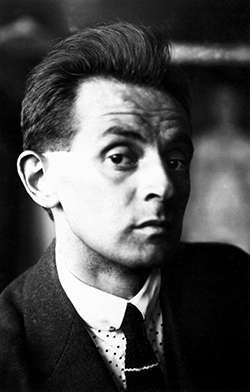Schiele was arrested and charged with abduction and seduction of a girl below the age of consent. He was eventually found guilty of exhibiting an erotic drawing in a place accessible to children, a much lighter offence, and imprisoned for a total of twenty-four days (three days in prison and twenty-one in custody). After the war broke out in June 1914, Schiele was not spared from conscription, but not transferred to the warfront. At the age of twenty-eight, just after a tremendous success at the Secession show in Vienna in 1918, which made his name a household word, he died from the Spanish influenza days after his wife, Edith Harms succumbed to the disease. His short but adventurous life and the controversy he caused were often materials used to interpret the eroticism and radical tendencies in his artwork. Scholars have argued that Schiele’s art, particularly his self-representation was an inward-looking art practice reflecting his psychological experience.[2]
Schiele used the human body as a medium to represent inner experiences in the most dramatic ways, exploring all possibilities of bodily expression. Most of his models were young, some even children. The bodies in his portraits and self-portraits were twisted, distorted, made ugly (Schiele was described as handsome and always well-dressed in person) to represent states of mind. It is as if Schiele deliberately exposed the morbid, even demonic hidden from the modern man with his unique vocabulary. This new aesthetic of the body, so distinct from the Secessionists’ erotically charged golden decorativeness, may have been inspired by observation of dance moves. Isadora Duncan, the exotic dancer Mata Hari and the Viennese Wiesenthal sisters performed for the Secessionists. Schiele’s friend Erwin Ösen, who posed for Schiele, was a mime and actor who employed bizarre and exaggerated gestures, some sexually suggestive. Ösen spent time in the Vienna Steinhof lunatic asylum studying the inmates as an aid to what he described as ‘pathological expression in portraiture.’[3] Photographs of patients suffering from diseases of the nervous system published in neuropathology journals in circulation in Vienna provided a plausible source of iconography for Schiele.[4] Contemporary artists Kokoshka (Fig. 1) and Max Oppenheimer made similar use of this iconography of the body showing the awareness of this group of young artists towards the appeal of this new body to their patrons and supporters.[5]
Claiming that ‘the erotic work of art is also sacred,’ Schiele’s interest in sex and sexuality were often criticized as pornography by his contemporaries. Viewed in context, however, his obsession with sexuality seems less remarkable against the cultural and social atmosphere of contemporary Vienna. A feverish interest in sex, fuelled by strict moral codes, led to a huge pornographic industry. Freud attributed the cause of psychological conditions to socially unacceptable repressed sexual desires and this can be detected in Schiele’s works. Sex and death went hand-in-hand. Freud later added a more predominant instinct, the death drive to his psychoanalytic theory in 1920, commenting on the neurotic conditions triggered by the aftermath of World War I. The tortured, amputated bodies in Schiele’s art anticipated the thanatos rather than indulge in the pleasure-granting eros.
Schiele’s body of work plays a role in the fin-de-siècle language crisis (Sprachkrise) when a loss of confidence in the ability of language to represent reality arose. Interpreting Nietzsche’s theory of language, Hugo von Hofmannstal articulated the importance of the non-verbal aspects of language, that is magic, mime and music. In other words, the body became the medium of the unspeakable. If we follow this logic in Schiele’s works, it is possible to understand Schiele’s expressive bodies as a creation of a silent language of forms, a manifestation of the desire to communicate what cannot be expressed by words at a time and place when modern men were most in need of being heard.[6]
[1] Danielle Knafo, Egon Schiele: A Self in Creation: A Psychoanalytic Study of the Artist’s Self-Portraits (London and Toronto: Associated University Presses, 1993), 22.
[2] Alessandra Comini, Egon Schiele’s Portraits (Los Angeles and London: University of California Press, 1974).








